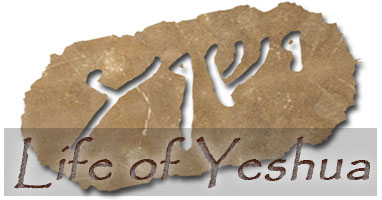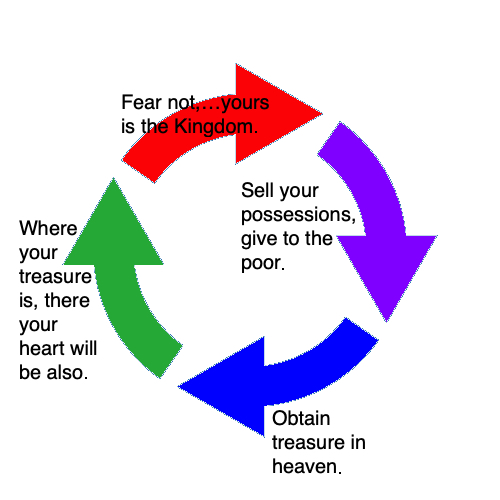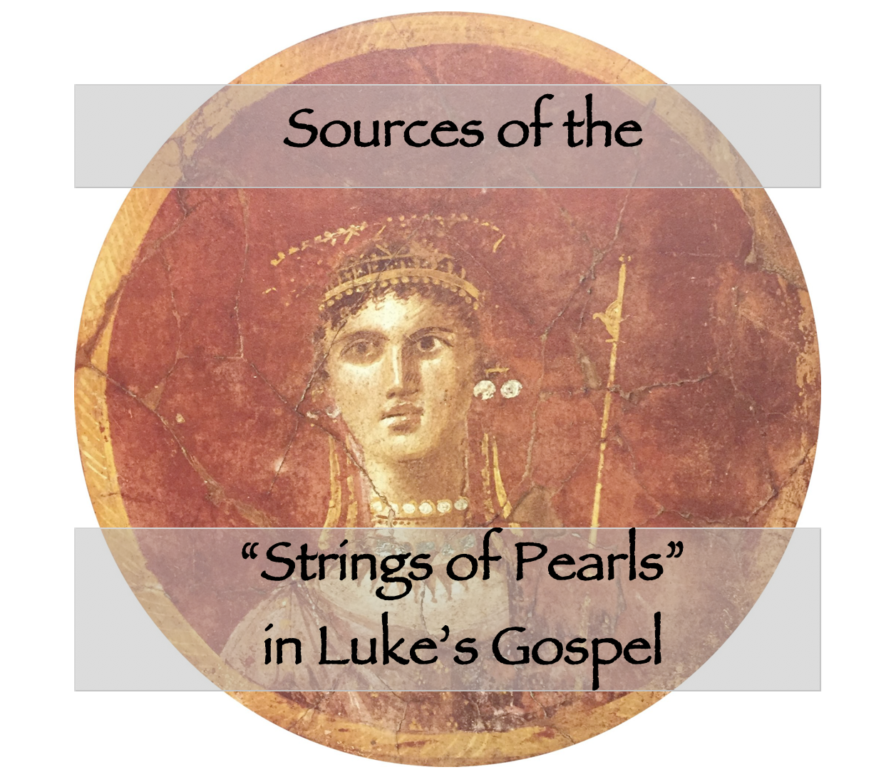(Luke 8:16-18; 9:23-27; 16:16-18; 17:1-6)
Updated: 1 November 2023
One of the characteristics of the Gospel of Luke is the presence of several small collections of sayings scattered about its middle section (Luke 8:16-18; 9:23-27; 16:16-18; 17:1-6).[28] These collections of three or more sayings are often unrelated to a clear teaching context. While the sayings in each grouping might share a thematic link, the individual sayings are not likely to have been uttered on the same occasion. They are really isolated sayings that have been secondarily hung together like a string of pearls.
Premium Members and Friends of JP must be signed in to view this content.
If you are not a Premium Member or Friend, please consider registering. Prices start at $5/month if paid annually, with other options for monthly and quarterly and more: Sign Up For Premium
 Click here to return to The Life of Yeshua: A Suggested Reconstruction main page.
_______________________________________________________
Click here to return to The Life of Yeshua: A Suggested Reconstruction main page.
_______________________________________________________
- [1] See Robert L. Lindsey, “From Luke to Mark to Matthew: A Discussion of the Sources of Markan ‘Pick-ups’ and the Use of a Basic Non-canonical Source by All the Synoptists.” ↩
- [2] See Lindsey, “From Luke to Mark to Matthew,” under the subheading “Lukan Doublets: Sayings Doublets.” ↩
- [3] See Lindsey, “From Luke to Mark to Matthew,” under the subheading “Lukan Doublets: Sayings Doublets.” ↩
- [4] See Robert L. Lindsey, “Unlocking the Synoptic Problem: Four Keys for Better Understanding Jesus,” under the subheading “Pre-synoptic Sources.” ↩
- [5] See our introduction to the “Destruction and Redemption” complex. ↩
- [6] The sources behind many versions of the pericope we have entitled Completion are discussed further in our introduction to the “Destruction and Redemption” complex. ↩
- [7] According to Lindsey’s hypothesis, the author of Matthew did not have access to the First Reconstruction except as it was filtered to him from Mark, who sometimes copied FR pericopae from Luke. Therefore, whenever Matthew’s Gospel has non-Markan material parallel to Luke’s, Matthew’s source was Anth. Nevertheless, the author of Matthew was not as reliable a transmitter of his sources as was the author of Luke. So we can never assume that the author of Matthew transmitted Anth. pericopae in their pristine forms. ↩
- [8] See Preserving and Destroying, under the subheading “Redaction Analysis.” ↩
- [9] See our introduction to the “Yohanan the Immerser and the Kingdom of Heaven” complex. ↩
- [10] There is also a Matthean parallel to Luke 16:18 in the Sermon on the Mount (Matt. 5:31-32), but there it is an obvious insertion due to the subject matter. It appears to be the author of Matthew’s distillation of the On Divorce pericope, which he knew from Mark (and Anth.?). ↩
- [11] See, for instance, Jesus and a Canaanite Woman and Withered Fig Tree. ↩
- [12] See the “Story Placement” discussion in Faith Like a Mustard Seed. ↩
- [13] See our introduction to the “Four Types of Hearers” complex. ↩
- [14] On the derivation of Luke’s version of the Four Soils parable from FR, see Four Soils parable, under the subheading “Conjectured Stages of Transmission.” ↩
- [15] On the derivation of Luke’s version of the Four Soils interpretation from FR, see Four Soils interpretation, under the subheading “Conjectured Stages of Transmission.” Into the Four Soils interpretation we believe the author of Luke inserted Mysteries of the Kingdom of Heaven (Luke 8:10). See the “Story Placement” discussion in Mysteries of the Kingdom of Heaven. ↩
- [16] On the derivation of Luke’s version of Yeshua, His Mother and Brothers from FR, see Yeshua, His Mother and Brothers, under the subheading “Conjectured Stages of Transmission.” ↩
- [17] On the derivation of Luke’s version of Quieting a Storm from FR, see Quieting a Storm, under the subheading “Conjectured Stages of Transmission.” ↩
- [18] On the derivation of Luke’s version of Possessed Man in Girgashite Territory from FR, see Possessed Man in Girgashite Territory, under the subheading “Conjectured Stages of Transmission.” ↩
- [19] See Lindsey, “From Luke to Mark to Matthew,” under the subheading “Lukan Doublets: Narrative Doublets.” We regard Luke 9:48 as FR’s version of Apostle and Sender, Anth.’s version being preserved in Luke 10:16. See Sending the Twelve: Apostle and Sender, under the subheading “Conjectured Stages of Transmission.” ↩
- [20] The verb δικαιοῦν (dikaioun, “to vindicate,” “to justify”) occurs 5xx in Luke (Luke 7:29, 35; 10:29; 16:15; 18:14), compared to 2xx in Matthew (Matt. 11:19; 12:37) and 0xx in Mark. Justifying oneself occurs only in Luke (Luke 10:29; 16:15). ↩
- [21] See Faith Like a Mustard Seed, under the “Conjectured Stages of Transmission” subheading. ↩
- [22] See our introduction to the “Four Types of Hearers” complex. ↩
- [23] See Faith Like a Mustard Seed, under the “Story Placement” subheading, and Withered Fig Tree, under the “Conjectured Stages of Transmission” subheading. ↩
- [24] On cross-pollination between similar sayings in Matthew, see Sending the Twelve: Conduct in Town, Comment to L115-122, and Woes on Three Villages, Comment to L24-28. ↩
- [25] See Demands of Discipleship, Comment to L24-25. ↩
- [26] See Preserving and Destroying, Comment to L1 and Comment to L9. ↩
- [27] See Faith Like a Mustard Seed, Comment to L15. ↩
- [28] Luke 11:33-36 is a small cluster of teaching material united by the catchwords “lamp” and “light.” This cluster of sayings does not qualify as a “string of pearls” because it is not made up of three or more self-contained sayings. The division in this cluster is Hiding a Lamp (Luke 11:33) and A Good Eye (Luke 11:34-36).

Luke 12:32-34 is another small cluster of teaching material, this cluster being united by the theme of trust in God. The arrangement of these sayings is very like a “string of pearls” except that they are not self-contained. Each saying cycles into the next. It begins with an exhortation not to fear, on the grounds that the little flock is in possession of the Kingdom. The cycle continues with an exhortation to sell one’s belongings based on the possession of the Kingdom. Giving away one’s belongings becomes the means of acquiring a treasure in heaven. Having a treasure in heaven allows one to trust. Trust allows one to overcome fear and have possession of the Kingdom. And so the virtuous circle cycles anew.
Since the sayings in Luke 12:32-34 are not self-contained “pearls,” we have not included this cluster of sayings in our discussion of the “strings of pearls” in Luke’s Gospel. It is possible, however, that, like the “strings of pearls,” the author of Luke’s source for these sayings was the First Reconstruction. ↩




